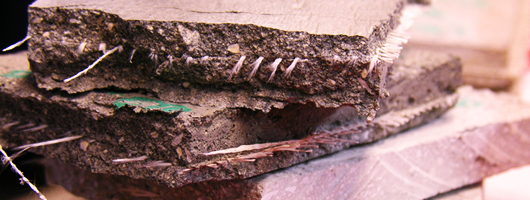
Research Focus Areas
We are developing programs and technologies to reduce climate change impacts both at the urban and global scales.
Climate
The concept of sustainability is quickly being infused within engineering and science disciplines. Journals are devoted to the topic, governmental frameworks are established around the relevant issues and businesses are developing related practices. Major institutions such as the U.S. National Science Foundation have established programs including their Environmental Sustainability and Energy Sustainability programs.
All of this is occurring at a time when in the first time of planet, society is predominantly urban. More than half of the planet’s population now lives in cities, up 30% from 50 years ago. Urban areas are gaining an estimated 67 million people per year—about 1.3 million every week. By 2030, approximately 5 billion people are expected to live in urban areas—60% of the projected global population of 8.3 billion. The grand challenge of sustainability requires engineers and scientists to examine and understand the implications of complex systems such as urban systems in relation to broad and aggregate impacts. This challenge is even more difficult in rapidly urbanizing regions, where globalization and the pace of change itself becomes part of what has to be considered in engineering designs, modeling, planning, and policy development.
At the National Center of Excellence we are working with governments and industry in developing programs and technologies to reduce climate change impacts both at the urban and global scales. To learn more of our work, please review some of our exciting projects.

Energy
At the NCE, we are focused on the nexus of Energy and Climate. To achieve a higher level of competitiveness and to meet growing regulatory requirements business must continue to seek out innovative technologies and organizational strategies to reduce their energy consumption. Programs undertaken by leading researchers at the National Center of Excellence include:
- Life Cycle Modeling for Energy & Climate
- Examining Electricity Reliability and Delivery Vulnerability
- Designs of Energy Reduction Technologies & Materials for Buildings
- Industrial Energy Reduction Strategies and Quantification Modeling
- Regional Energy Modeling Incorporating Climate Change / UHI Impacts
Innovations include:
- Solar Designs
- Solar Thermal Technologies including Solar Absorption Cooling
- Nano-particle Solar Designs
- New Generation of Surface Materials

Materials
Smart Materials
There are more than 76 million residential buildings and nearly 5 million commercial buildings in the U.S. today. These buildings together use one-third of all the energy consumed in the U.S., and two-thirds of all electricity. They consume 25% of all water supplies and 30% of all wood and materials. By the year 2010, another 38 million buildings are expected to be constructed.
Buildings are a major source of the pollution that causes urban air quality problems, and of the pollutants that contribute to climate change. They account for 49 percent of sulfur dioxide emissions, 25 percent of nitrous oxide emissions, and 10 percent of particulate emissions, all of which damage urban air quality.
Rapidly urbanizing regions provide unique opportunities to deploy new urban planning, as well as residential, commercial and industrial designs which reduce the reliance on fossil fuels while promoting the use of emerging construction materials and technologies such as fuel cells, wind energy, photovoltaics, hydrogen, geothermal and distributed generation.
Sustainable buildings consume fewer resources, generate less waste, cost less to operate, and provide healthier living and working environments than traditional buildings. In general, green building can be defined as design and construction practices that significantly reduce or eliminate the negative impact of buildings on the environment and occupants.
Cool Pavements
Using NASA satellite imagery, the top 20 % surface temperatures in Phoenix, Arizona are presented in red. The network of streets, highways and parking lots is clearly visible.
Cool pavements are designed to reduce adverse climatic impacts such as the Urban Heat Island by optimizing the physical thermal characteristics of pavement design. This includes single and multi-layer designs which optimize thermal conductivity, heat storage capacity, density, albedo and emissivity.
The carries out research through heat transfer modeling, fundamental materials research, field trials at our outdoor research facility and in-situ in our designed pavements put in place throughout the Phoenix metropolitan region in conjunction with local and state agencies.
